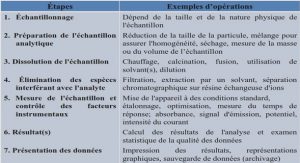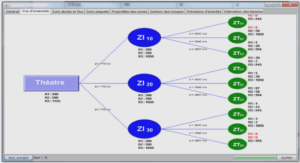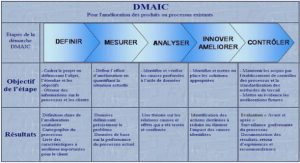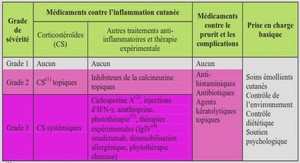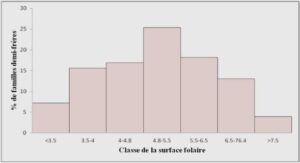Easing language conflict problems is a critical challenge for language management and language planning. This research investigates a potential solution: altering the current negative mental representations about the languages in conflict. We need, first, to agree on what is meant by language conflict, language contact, and language planning and language attitude. These constructs are closely interrelated and constitute the specific sociolinguistic context of this study.
Language conflict
Language conflict is a state of opposition between two or more social groups within a multilingual setting, as stated by Nelde (1998) who wasn’t the only one to notice the multilingual nature of linguistic struggles. Calvet (1999) also acknowledged that multilingualism is a prerequisite for language conflict.
Multilingualism involves not only distinctive languages but also varieties and dialects. In New York, for example, the different English varieties ‘’may be regarded as a sink of negative prestige,’’ as reported by Labov (1969:136). Therefore, the construct of language conflict is not limited to languages but can also encompass dialects.
Origins of the problem
Throughout history, linguistic hostility has been so widespread among speech communities to the point that Nelde stated that ‘’there can be no language contact without language conflict.’’(1998:201). considering the many instances that confirm it, this ‘Nelde’s Law’ cannot be easily refuted. For example , we can notice a resemblance between the current conflicting speech communities and the ancient Greeks’ tendency of ‘contempt’ for linguistic differences ( Calvet 1999: p.64). Anyone who didn’t speak Greek was seen as a ‘barbaroi’ i.e. a member of an uncivilised people. Both the term and the concept’ barbarus’ was borrowed into Latin by the Romans with their large empire, fostering the same negative attitude towards the various other speech communities’ languages.
Another instance is the Europe of the Middle Ages under the JudeoChristian cultural influence. Multilingualism was a punishment for human beings who used to be monolingual according to the biblical myth of the Babel tower (Calvet, 1999). Condemning the Ephraims to death because of their different pronunciation of the Hebrew word ‘shibboleth’ is another instance of language role in conflicts reported in the Bible. Even the expansion of a language such as French was due to the Crusades and their occupation of England in 1066. The main linguistic concern of the French state from the 16th to the 19th century was to grant supremacy of French over all the other languages (Calvet, 1999).
For the English language, suffice it to mention the ‘English Only Movement’ in America. All the other languages were banned from the official sphere. In 1919, President Theodore Roosevelt wrote: »We have room for but one language in this country and that is the English language.’’ (‘’English Only Movement’’, 2010).
Contemporary cases
The following instances are by no means exhaustive, but they are some of the well known in the world.
Norway
Explicit linguistic choices are more apparent in the Norway case in its attempt to remedy language conflict extensively studied by Haugen (1966).
Haugen, who coined the term ‘language planning’, mentioned the conflict between the two Norwegian varieties: Bokmal and Landmal. The former associated with the high Norwegian elite and the latter spoken by the rural people. Haugen (1966) clearly showed how the choice of each variety depended on the political authorities. From 1914 to 1938, the influential Communist party emphasised the use of Landmal as both a means of national unity and a symbol of the proletariat class struggle since Landmal was very close to rural varieties. The German occupation abolished that in 1941 and installed Bokmal. After the end of World War II, Landmal was recognised again and the language conflict had to go on ever since despite the many efforts to manage it. Haugen (1966) described the outcome of the Norwegian language conflict and the language policies to remedy it as ‘schizoglossia’ which is a type of internal personality split in many speakers because of the linguistic uncertainties they encounter. That concept is totally different from Ferguson’s diglossia with its high and low varieties.
The Belgian case
Belgium also represents a clear example of current language conflicts in the world. Belgium is a multiethnic and multilingual country (French, Flemish, Brabantish, Limburgish, Walloon, Picard, and Lorraine). Because of specific historical conjunctures, the conflict exists between French and Dutch, called Flemish in French texts.
From the Napoleon wars, French enjoyed higher power and prestige then Dutch. Later on, Dutch knew some glory days under the reign of the Dutch king who imposed it on whole Belgium and the other parts of his Netherlands Kingdom. French regained its power and prestige with Belgium independence in 1830. French monopoly in the official and social spheres was seen by the Belgian elite as a national unitary factor. This situation, however, didn’t suit the Flemish who militated and got the right to use their language in primary schools in 1883. The Flemish language replaced French in Ghent University in 1894. As a solution to this linguistic conflict that went on during the 20th century, Karra (2007) mentioned the government chose to divide the country into three ‘language frontiers’:
1- a French part in the South
2- a Flemish part in the North
3- a bilingual part in Brussels .
The Canadian case
Canada was originally a French speaking country under the French crown. It had, however, known a growing English speaking community under the English crown after the Indian Wars in 1760 to the point of outnumbering the French speakers in the subsequent years. With the need to choosing a national language for the new Canadian Confederation in 1867, the language conflict between the two communities started, tearing the country between the French speaking Québécois and the English speaking group in the other part of the country. The Charter of the French Language of 1977 represents an aspect of the ‘official bilingualism’ solution that Canada adopted to solve the language conflict so pervasive in its modern history (Noel, 2010).
In the ‘Third World’, on the other hand, Calvet (1974) argued that language conflict cannot be attributed to multilingualism alone but also to the post-colonial sociolinguistic heritage raised many instances of language conflict. This observation seems to be very pertinent. Most of linguistic troubles in Third World countries incorporate the former colonial language in them.
The Algerian case
Being a multilingual country and a former French colony, Algeria cannot be an exception to the havocs of language conflict spread all over the world.
In fact, the sociolinguistic situation in Algeria is characterised by the existence of four main languages: SA, AA, B and F. AA and B have many varieties. Sociolinguistic phenomena such as code switching, code mixing and borrowing are also omnipresent because of the long contact between these languages.
This view is shared by most of the scholars who studied the sociolinguistic situation in Algeria, including two Algerian prominent specialists on the matter: Bouamrane (1986) and Taleb Ibrahimi (1995). Although some researchers claim that the number of languages in Algeria exceeds twenty (Boukli, 2006), all the researchers agree that the above four languages are the main ones in Algeria. They also recognise the existence of a state of language conflict in Algeria.
Introduction |
